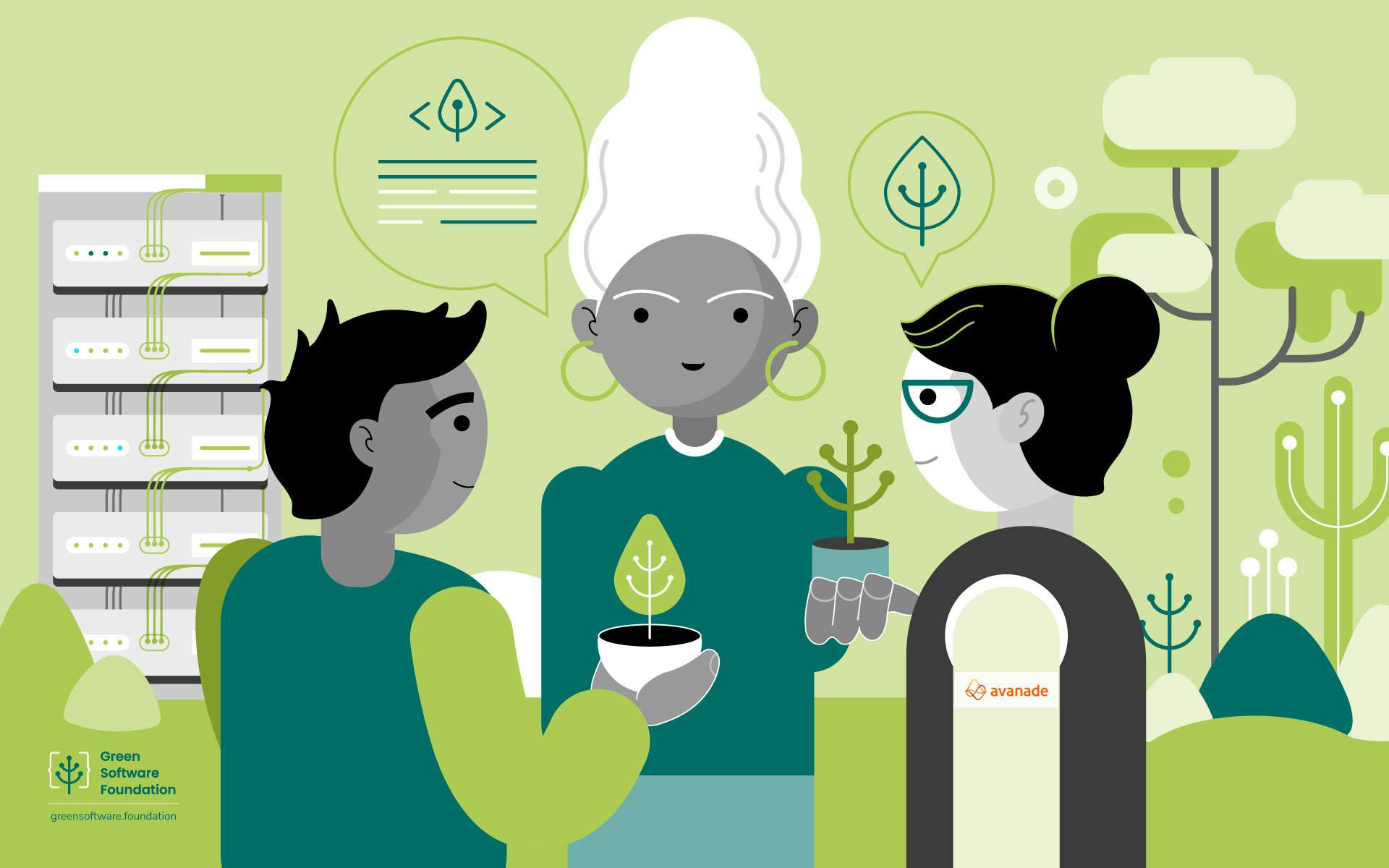Avanade is home to a fascinating story of how the fresh breeze of sustainability fosters continued change in an organization. It all started with joining the GSF roughly two years ago, and while the beginnings were slow, the results are nothing short but astounding. But we’re getting ahead of ourselves; let’s see where they began and find out how far they got.
A systematic approach to implementing GSF principles
“When we first joined the GSF our main goal was to deliver all client projects at Avanade using green software engineering practices. We wanted to be recognized as a responsible business, committed to sustainability and green software,” so Chris Lloyd-Jones, Head of Open Innovation at Avanade.
A project plan had to be pulled together to spell out how to achieve the sustainability objectives. So, Chris sat down and started to formulate a structured approach with timelines. It involved training people on green software principles, internal and external marketing & communications as well as new standards for client deliverables.
Chris wrote two articles for the GSF during that time. Both highlight how to foster a green software culture within an organization:
Spreading the Message of Green Software
Establishing a Centre of Excellence
Planting the green software seeds
Avanade started educating its employees shortly after joining the GSF. The training focused on basic conventions and principles of green software. This was before the GSF established its Practitioner Course. By training 3,200 employees, Avanade ensured that folks across the organization had a basic understanding of green software and that everyone was speaking the same language.
“We started to talk across our organization, setting up special interest groups and looking at groups across the organization that already had a similar role. We tried to mobilize their interest in speaking and learning more. We also looked at our software development lifecycle to define where carbon emissions were potentially coming from.”
Chris’ team is responsible for this type of incubation throughout the organization. Essentially, they simply replicated the proven concept of starting conversations within a small group of people, letting other interested parties join before the discussion just organically spreads across the organization.
A great example is Avanade’s Lean Coffee Group, where every month, a member presents on a sustainability topic. All sessions are recorded, and resources are provided to group members. Another group of volunteers has created the Sustainability Flipboard which shares the latest news about sustainability, looks at other companies’ sustainability ideas, and what’s new in the market.
Accomplishing the big leap ahead
“We managed to engage a core group of about 20-30 people who were really interested in green software. To get everyone else involved seemed like a daunting task in a company of about 60,000 people.”
Avanade then launched a SharePoint site on best practices for developing, using, and measuring green software, containing plenty of information on training, solutions and corporate sustainability, e.g. linking to the Avanade sustainability report or giving insight into the carbon emissions of their websites and listing internal contacts for a variety of sustainability topics.
According to Chris, the tipping point was reached with the GSF Global Summit in June 2022, which Avanade co-sponsored. Chris and his team were able to leverage the event by engaging software developers, engineers, and architects at several corporate locations simultaneously.
“After running the local sessions, we shared all the recordings from Sydney, London, Houston, etc. At that point, I noticed a lot more interest. Moving into the end of last year, the GSF launched the State of Green Software Survey. Avanade had about 900 people contribute to it. Of course, there was an effort around it; we talked in our internal groups about how we could make a difference, and we even offered a prize draw. In any case, I was profoundly happy with the level of engagement.”
Excellence manifests after consistent messaging
In July 2023, Avanade added dedicated sustainability teams. With sustainable IT as one of three sustainability pillars, all teams have committed to fostering green software in their region. Apart from promoting the Green Software Practitioner Course, Avanade also encourages its employees to get involved with the GSF. To date, close to 1,000 employees have the practitioner certification, and 104 are actively contributing to GSF working groups.
“All of a sudden, we’re seeing initiative. As a result of our steady efforts, we see local activity groups popping up, totally independent from our team. France has the Gallia Green Week, which organizes their own green IT webinars, for example. Consistent messaging and empowering our people with information and resources has made all the difference.”
The green software movement keeps evolving at Avanade. New groups in a variety of countries are structuring information by different industries, such as finance, manufacturing, or energy, and share updates on what's happening across the organization. The GSF is often featured in those discussions and communications, serving as a knowledge source.
Crossing the bridge to client solutions
The cultural changes at Avanade have given the organization a critical edge in the market. Being seen as a responsible solution provider is one thing, but truly connecting with clients and helping them harness the value of green software investments is yet another. Avanade has certainly set itself up for success in this respect.
“We have defined operational efficiencies and sustainable engineering practices, to name just two target areas for saving carbon emissions. The starting point for the client is baselining, in most cases. Measuring what’s there and helping them see where the carbon is within their software is an eye-opener. The cultural affinity of our people for green software is absolutely crucial for getting that process started effectively.”
This article is licenced under Creative Commons (CC BY 4.0)
